To be situated: understand FSI (Fluid-Structure Interaction) analysis
Engineering is continuously evolving, improving the way analysis and calculations were once made during projects. Today, new applications, systems and computer models are used, ensuring greater efficiency in processes.
Simulations have been optimized over time, following modern technologies, including the Multiphysics branch. FSI – Fluid-Structure Interaction, is a recurring term in discussions about this subject.
Next, it will be discussed what FSI analysis is and how it is applied in the industry.
What is FSI analysis?
In the industrial context, it is possible to observe interactions between rigid structures and flowing fluids in many scenarios. The fluid-structure interaction analysis consists in the association of fluid dynamics laws with the mechanics involving structures.
To perform a FSI analysis, it is necessary to master the principles and techniques used in the FEM and CFD analysis.
Check in the links below some of the texts published in KOT’s Blog about these subjects:
● To be situated: understanding the Finite Element Method
● Understanding the Finite Elements Method (FEM)
● FEA versus FEM: Which term should you use?
● Computacional Fluid Dynamics: the required physics and maths behind CFD
● The main uses of CFD simulations
● Finite Elements Method, volume, and discrete elements: which are the main differences?
In short, these interactions can be observed from two perspectives: the fluid’s behavior after encountering the structure or the structure’s behavior under the action of the fluid flow.
Considering Fluid-Structure Interaction in Design and Modeling
Fluids can be defined as substances that continuously deform when subjected to a shear force, regardless of its magnitude. [2]
Bulk materials, when found at high moisture levels, can exhibit behavior similar to fluids, as in one of Kot’s success cases.
In the study at hand, a FSI analysis was performed on a humid granulated material stored in a silo. Under the conditions evaluated, the material would accumulate on the asset walls until a point where its mass suddenly detaches and flows downward, forming an avalanche.
This avalanche advances towards the extraction feeder, which is not dimensioned for this condition, and suffers severe impacts, enough to collapse its metallic structure. The simulation shown in Video 1 demonstrates the event.
In other processes, there are industrial mixers, which have movable parts, and are considered to be essentially rigid parts that agitate a fluid, responsible for, as an example, incorporating particulates into liquids. In this context, the mixing efficiency is the most important factor to be computed.
On the other hand, it is also possible to calculate the stresses in the agitators. Solid structures can be treated as fully stationary obstructions for the fluid flow, in order to compute the stresses in the solid materials.
FSI analysis and its applications in industry
In many industrial scenarios, the flow of fluids such as air and water can result in large stresses and strains in structures. These, in turn, can cause vibrations and critical deformations in rigid bodies.
FSI analysis can be performed on several industrial assets. Some of the possible applications are:
- Analysis of the effects generated by vortices in submerged structures, such as dam gates, pipelines, etc.
- Aerospace component analysis
- Component analysis for marine equipment
- Automotive component analysis
- Agitation systems design, such as reactors, mixers, thickeners, etc.
Conclusion
FSI analyses have wide applicability for the industrial context. The results can enable the physical-mathematical study to understand effects not visible to the naked eye, identifying possible improvements and corrections, such as: designing the components of an agitation system compatible with the required efforts generated by fluid movement; dimensioning a structure capable of resisting the impact of a flowing fluid.
Thus, obtaining structures with greater slenderness and lower cost, increasing the efficiency of the process (agitation efficiency), precisely estimating the assets’ useful life under the operational conditions in which it is inserted, among others.
KOT has experience in this area and can help with your needs. Consult the company’s team of specialists to evaluate the possibilities of application in your context.

KOT Engenharia’s Team
With over 29 years of history and various services provided with excellence in the international market, the company promotes the integrity of its clients’ assets and collaborates in solutions to engineering challenges. For this integrity, it uses tools for calculation, inspection, instrumentation and monitoring of structures and equipment.
References:
[1] https://br.comsol.com/multiphysics/fluid-structure-interaction
[2] STREETER, V. L. Fluid Mechanics. 1951.
[3] Kot Engenharia Collection.


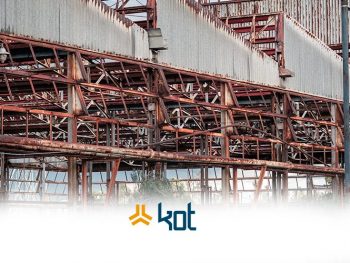


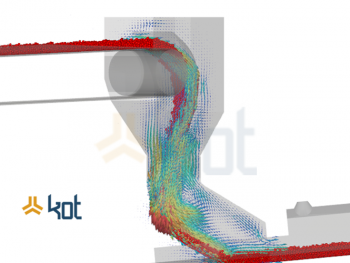
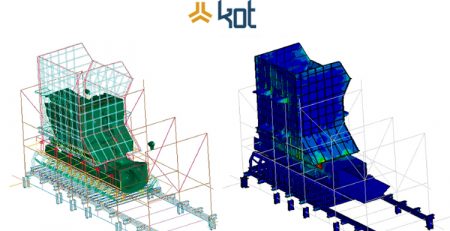

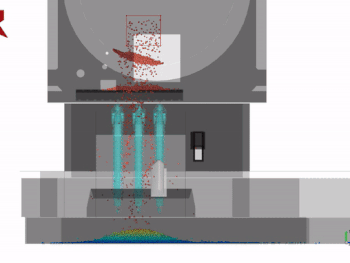
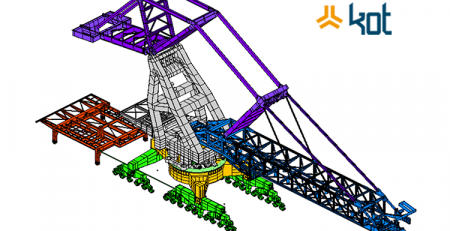


Leave a Reply